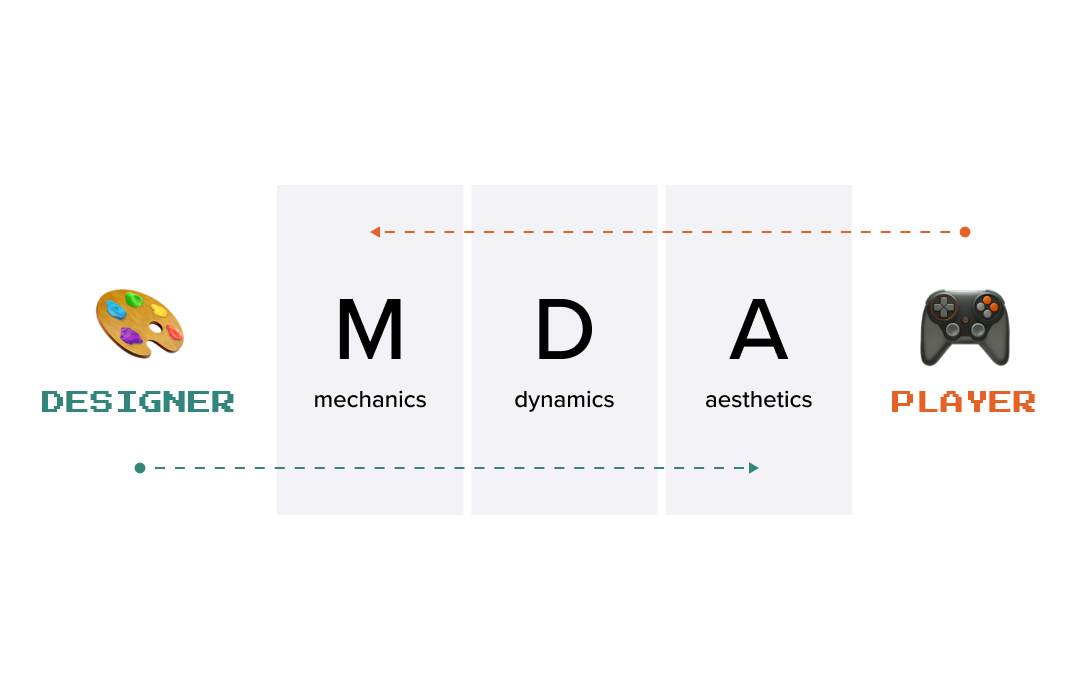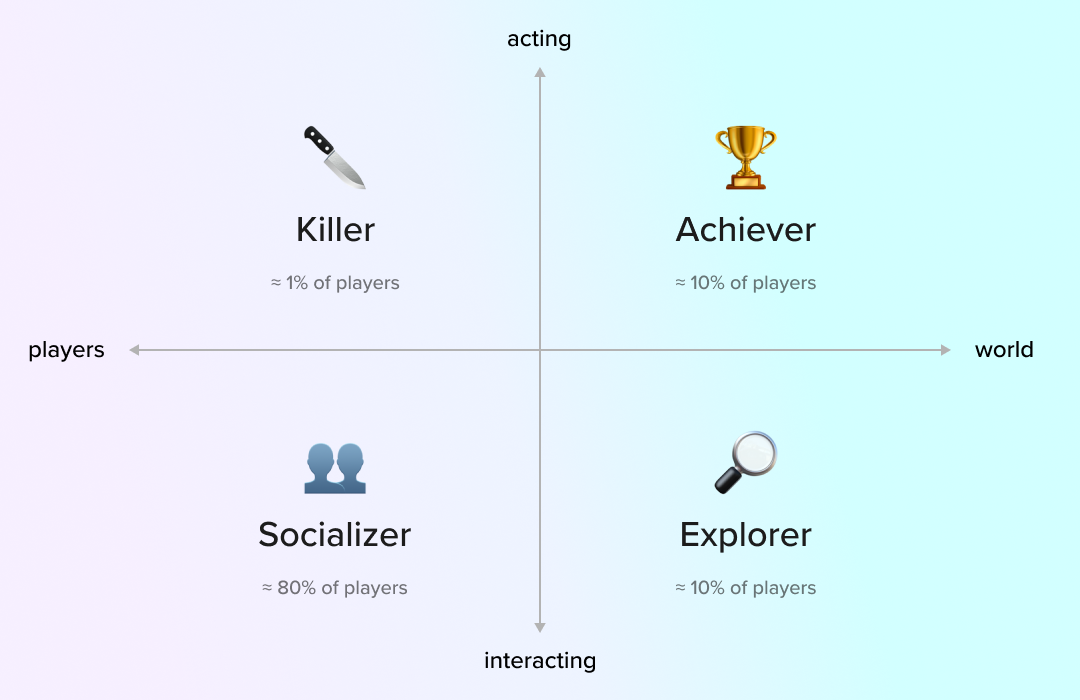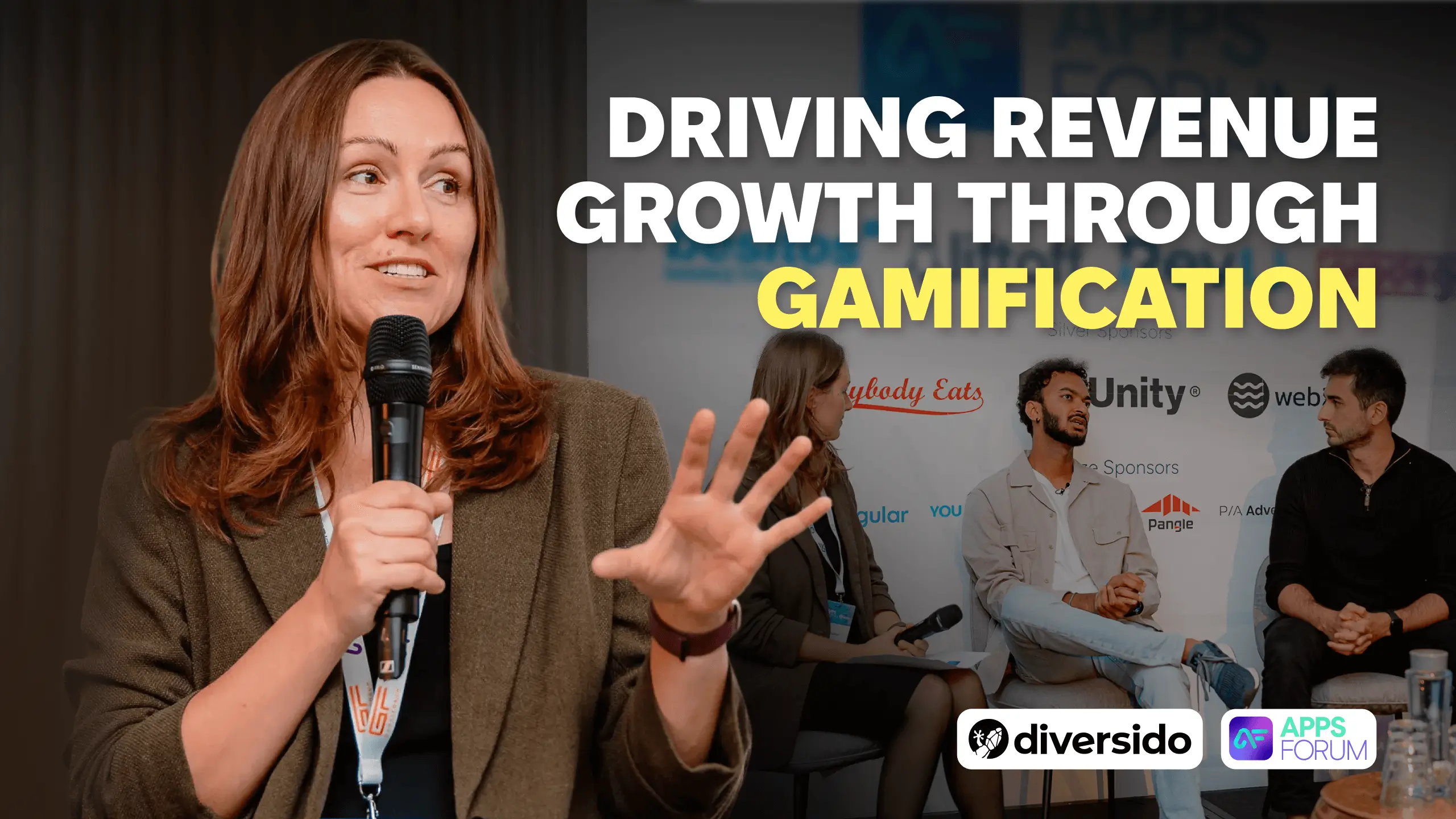
Top Gamification Frameworks Explained: How to Choose the Right One
Gamification isn’t just about points or badges. It’s a structured approach to building engagement through game-like elements. In this guide, we explore popular gamification frameworks and how to apply them effectively.

Gamification is more than adding game-like features — it’s about using structure and psychology to create lasting engagement. At Diversido, we apply proven frameworks like Octalysis to design digital experiences that motivate users and drive results. Whether it’s a learning app, a wellness tracker, or a healthcare platform, gamification helps make products more effective — and enjoyable to use. You can read more about how we apply gamification in healthcare and education products or explore a gamified cognitive assessment app we helped bring to life — now used in clinical trials.
Have you ever wondered how apps like Duolingo keep you coming back or why Fitbit makes daily goals feel so rewarding? Their secret lies in applying structured gamification frameworks that guide how users engage, progress, and stay motivated.
If you're new to gamification, you might start with simple elements like:
- tangible rewards (points or badges)
- progress tracking (levels or milestones)
- time-based challenges
- social features like leaderboards or collaboration
These tools, when backed by the right framework, can turn everyday interactions into memorable experiences. Below, we’ll explore the most widely used gamification frameworks and how to apply them to your product.
1. Octalysis Framework: Understanding What Drives Us
Creator: Yu-kai Chou
Overview: The Octalysis Framework created by Yu-kai Chou is one of the most well-known gamification frameworks out there. This framework describes the main reasons people engage with games and similar activities into eight core drives of human motivation. These include:
- Epic Meaning & Calling, which stands for the feeling of being part of something bigger than oneself, like a family or community.
- Development & Accomplishment denotes the desire to grow, achieve, and master new skills.
- Empowerment of Creativity & Feedback represents the joy of creating, experimenting, and receiving valued feedback.
- Ownership & Possession stems from the motivation to own or control something.
- Social Influence & Relatedness show our need for human interaction, relations, and acceptance of who we are.
- Scarcity & Impatience play on our desire for things we can’t have or have to wait for.
- Unpredictability & Curiosity, driven by the excitement of surprise and the unknown.
- Loss & Avoidance represent the motivation not to lose something valuable to us.
How to use it. The Octalysis Framework can help you better understand your target audience. Get to know the players, identify which of these core drives is most important for them, and design experiences that tap into these motivations. For example, if your audience loves competition, focus on “Development & Accomplishment” by adding levels or leaderboards. Or, if the users are socially driven, consider features that encourage collaboration or sharing to make them feel this sense of online community.
We often apply the Octalysis Framework in our projects to design engaging user experiences. To see how this works in practice, explore our portfolio.

2. GAME Framework: A Simple Four-Step Plan
Creator: Andrzej Marczewski
Overview: Another convenient gamification framework is GAME, which provides a straightforward, 4-step process to help you create meaningful gamified experiences. These four steps are Goals, Actions, Motivation, and Engagement:
- Goals: define what objectives you want to achieve with gamification. Is your objective to increase user engagement, encourage learning, or boost sales?
- Actions: which actions are needed for users to reach those goals? Some examples may include completing tasks, sharing content, or achieving specific milestones.
- Motivation: determine what can motivate your users to take these actions. Will they be driven by such results as rewards, status, or personal growth?
- Engagement: measure how engaged your users are and rethink and refine your approach as needed to achieve better results.
How to use it. The GAME Framework is for you if you’re only at the beginning of the gamification design process. It can offer a clear roadmap, and help you to think through what you want to achieve and how to make it happen. For instance, if your main purpose is increasing app usage, you might motivate users with badges for daily logins (actions) and monitor their engagement levels to adjust the difficulty or rewards accordingly.

3. MDA Framework (Mechanics, Dynamics, Aesthetics): The Building Blocks of Fun
Creators: Robin Hunicke, Marc LeBlanc, Robert Zubek
Overview: Oftentimes, game design frameworks can be used for app gamification as well. The well-known MDA Framework is one such framework, which was first developed with game design in mind, but turned out to be quite flexible and worked for gamification. This straightforward model breaks down the game experience into three key components and builds on them:
- Mechanics – the rules and systems shaping how the gamified process functions (for example, points, badges, or levels within the app).
- Dynamics manifests itself in the process of how people engage with those mechanics (for instance, are they competing on a leaderboard or working together towards a common goal?).
- Aesthetics are the feelings or experiences that arise from those interactions (imagine the satisfaction of winning or the frustration of falling behind).
How to use it. This framework can help you realise how the different parts of your gamification strategy work together. To use it, it’s best to start thinking about the end result first, namely — what emotions or experiences (or aesthetics) do you wish your users to have? Once you figure that out, you can start to go backwards to figure out the Dynamics and Mechanics needed to make that happen.

4. SAPS Framework: Motivating Users with Different Types of Rewards
Creator: Gabe Zichermann
Overview: SAPS is more about the rewards system as it highlights four types of rewards that can be used to motivate players and keep them engaged. The SAPS abbreviation stands for:
- Status as a reward is manifested by the recognition of a user and where they stand among other users.
- Access is a type of benefit that offers special perks or opportunities for some users that others don’t get.
- Power guarantees the ability to influence or control other users or maybe certain aspects of the environment.
- Stuff is the easiest one and represents physical or tangible rewards like prizes, money, or goods that can be used for the user’s satisfaction.
How to use it. Although it can be difficult to gamify the whole app with the SAPS framework, it certainly comes in handy when you’re creating a reward system. Start by figuring out what kind of rewards drive your audience the most — if the users love being recognised for their success in the game, focus on “Status” by offering badges or special titles; if they’re more motivated by exclusive content, lean into “Access” to keep them engaged and coming back; “Power” is for more power-driven people, giving them the chance to execute it; and “Stuff” can be a nice addition to the other rewards.

5. Self-Determination Theory (SDT) Framework: Fostering Intrinsic Motivation
Creators: Edward Deci and Richard Ryan
Overview: The SDT Framework requires a deep knowledge of the target audience since it is built on the concept that people are driven by three core psychological needs:
- Autonomy, which is manifested in the desire to feel in control of their actions and feelings.
- Competence as the need to feel capable and skilled to overcome challenges and get rewards.
- Relatedness — the longing to have a sense of connection with others and a feeling of the community.
How to use it. To boost the most basic feeling of motivation, aim to create gamified experiences that satisfy people’s needs. For instance, if your audience is more autonomous, let them pick their own challenges (Autonomy), provide them with the needed feedback to help them grow and improve their knowledge (Competence), and incorporate various social elements like a team challenge to build connections with others (Relatedness).
.svg)
6. 4 Keys 2 Fun Framework: Making Sure It’s Fun for Everyone
Creator: Nicole Lazzaro
Overview: The 4 Keys 2 Fun Framework by Nicole Lazzaro is built on the notion that there are four different types of fun that people enjoy, and therefore tend to engage with more:
- Hard Fun, consisting of difficult challenges, and problem-solving to earn results.
- Easy Fun stands for curiosity, analysis, and exploration.
- Serious Fun is for participating in meaningful and purposeful tasks.
- People Fun includes social interaction, collaboration with others, and sharing common goals.
How to use it. This framework can help you create a balanced experience. For example, the implementation of puzzles or challenges for getting “Hard Fun” is balanced by the “Easy Fun,” which is less difficult to earn; “Serious Fun” suggests meaningful missions, and “People Fun” enables social elements like group chats or competitions.

7. Bartle's Player Types: Designing for Different Personalities
Creator: Richard Bartle
Overview: Bartle's Player Types is a gamification design framework that works by categorising players into four types:
- Achievers — are motivated by achieving goals, hopping levels, or gaining points badges.
- Explorers — love discovering new areas, mechanics, or secrets.
- Socialisers — players, motivated by social interaction, collaboration, and shared service.
- Killers — get ahead by competition and winning over other players.
How to use it. This framework helps tailor your gamification approach to different user personalities. For it to work, you must research your target audience and use the gathered data and metrics to categorise them. If your audience is full of “Achievers,” create a rich levelling system and leaderboards; for “Explorers,” provide hidden content or unexpected rewards; “Socialisers” will enjoy chat features and team missions, while “Killers” will definitely engage with competitive elements.

8. Hooked Model: Building Habit-Forming Products
Creator: Nir Eyal
Overview: The Hooked Model framework helps to create gamified systems that will sort of form habits in users by guiding them through a four-step process. It contains the following game mechanics:
- Trigger, which is a cue that can initiate a behaviour in a user (like a push notification).
- Action represents the simplest behaviour made in anticipation of a reward (like clicking a button).
- Variable Reward varies in form or amount to keep users interested (like a surprise bonus).
- Investment is a small action that increases the possibility of future engagement (like saving progress or setting preferences).
How to use it. The Hooked Model is a perfect tool for building products that users return to regularly. If you want to utilise it, start by identifying the triggers that can bring users back, design simple actions they can take, offer different rewards to keep them engaged, and encourage investments to increase the chances of their return.

9. 6D Framework: A Step-by-Step Guide to Gamification
Creator: Kevin Werbach and Dan Hunter
Overview: The 6D Framework is more of a game designer practical guide to gamification. It outlines six steps for implementing gamification into your design process:
- Define Business Objectives – clarify which gamification objectives you want to achieve.
- Delineate Target Behaviors – identify the specific player behaviours you want to encourage.
- Describe Your Players – get to know your audience and understand their characteristics and preferences in every context.
- Devise Activity Loops – create engaging loops (like short-term tasks and long-term goals) that will make players act.
- Don’t Forget the Fun – chasing the perfect user experience, don’t forget that it should also be enjoyable.
- Deploy Appropriate Tools – research and utilise the proper gamification tools to achieve your goals in the game.
How to use it. This framework is like a checklist for adding game design elements. Follow these six steps to craft a gamified experience that aligns with your business goals, keeps your users engaged, and suggests a fun pastime.
Which Framework Is Right for You?
Gamification isn’t always easy and requires a lot of work and dedication from the designer. Luckily, there are specific frameworks that help to highlight the goals, determine the gamification mechanics, and get to know the users. The GAME Framework is a great starting point for those who only begin their journey. The Octalysis Framework or Self-Determination Theory will provide deeper insights into users' motivation and core drives. The SAPS Framework might be your best bet if you’re keen on the rewards, and the Hooked Model can guide you to building a habit-forming product.
In gamification, there’s no one-size-fits-all solution, but by understanding the users better and learning about their needs and values, you can design engaging experiences that will keep them wanting to come back for more.
Happy gamifying! 🎮
.webp)
FAQ
What is a gamification framework?
A gamification framework is a structured model that helps you apply game-like elements, like points, rewards, or progress tracking, into apps, websites, or learning systems. It guides how you design for motivation, behaviour, and engagement.
Why use a gamification framework in app design?
Frameworks make gamification purposeful. They help you avoid random “badges and leaderboards” and instead focus on user psychology, retention, and product goals. It’s how apps like Duolingo and Fitbit keep users hooked.
What is the Octalysis Framework in gamification?
Octalysis, by Yu-kai Chou, breaks motivation into 8 core human drives, like accomplishment, curiosity, or social influence. It’s useful when you want to align features with real user motivation rather than just entertainment.
What are the 4 Keys to Fun in gamification?
This model by Nicole Lazzaro describes four types of fun that drive user behaviour:
- Hard Fun (challenge)
- Easy Fun (exploration)
- Serious Fun (purpose)
- People Fun (social play)
It’s helpful when you want to ensure different personalities enjoy your product.
What is the SAPS framework in gamification?
SAPS focuses on rewards. It stands for Status, Access, Power, and Stuff - four ways to incentivise and retain users. You can mix these depending on what motivates your audience.
What is the difference between game mechanics and gamification frameworks?
Game mechanics are the “building blocks” (like points or timers). Frameworks are strategic. They help organise these elements around user goals, emotions, and behaviour.
How do I choose the right gamification framework for my app?
It depends on your goals and audience. Use GAME if you’re starting out, Octalysis for motivational design, Hooked for habit-building, and SAPS for planning rewards. No single framework fits all, sometimes it’s best to mix and match.
What are some real-world examples of gamification in apps?
Apps like Duolingo, Fitbit, and Kahoot! use gamification frameworks to increase retention, build habits, and encourage learning through challenges, streaks, and points.
At Diversido, we’ve also delivered apps that use gamification to boost engagement and outcomes — explore our portfolio for inspiration.
Can gamification improve user experience (UX)?
Absolutely. Done right, gamification makes digital products more engaging and enjoyable. It helps users progress, feel rewarded, and stay motivated, all crucial to great UX.



.webp)
.png)

